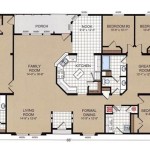```html
Home Health Care Agency Business Plan: A Comprehensive Guide
Developing a robust business plan is paramount for launching a successful home health care agency. This plan serves as a roadmap, outlining goals, strategies, and financial projections. It's not merely a formality for securing funding; it's a living document that guides decision-making and ensures the agency stays on course. A well-structured business plan demonstrates a deep understanding of the home health care market, the competitive landscape, and the operational intricacies involved in providing quality care.
The key components of a home health care agency business plan are multifaceted, requiring meticulous research and strategic planning. These components provide a comprehensive overview of the agency's purpose, operations, and financial viability. A poorly defined or incomplete business plan can lead to operational inefficiencies, financial instability, and ultimately, failure to meet the needs of the patients served.
Key Point 1: Defining Your Agency and Services
The initial section of the business plan must clearly define the agency's mission, vision, and values. The mission statement articulates the agency's purpose and its commitment to patients. The vision statement outlines the agency's aspirations for the future, while the values define the ethical and operational principles that will guide its actions. This section should also precisely describe the specific services the agency will offer. These services can range from skilled nursing and physical therapy to personal care and companionship.
A thorough understanding of the target market is crucial for success. Identify the specific demographics within the service area—age groups, income levels, and health conditions—that the agency aims to serve. Analyzing the needs of this target market will inform the services offered and the marketing strategies employed. For example, an agency located in a retirement community might prioritize services tailored to seniors with mobility issues or chronic illnesses. Understanding the local market also involves assessing the availability of alternative care options, such as assisted living facilities and other home health agencies.
The agency's legal structure is another critical factor to consider. Choosing the appropriate legal structure, such as a sole proprietorship, partnership, limited liability company (LLC), or corporation, has significant implications for liability, taxation, and operational requirements. Consulting with legal and financial professionals is essential to determine the most suitable structure for the agency's specific circumstances. The business plan should clearly state the chosen legal structure and explain the rationale behind the decision.
Licensing and accreditation are mandatory for operating a home health care agency legally and ethically. The business plan must outline the steps required to obtain the necessary licenses and certifications from federal, state, and local authorities. This includes outlining the processes for meeting regulatory requirements for staff qualifications, patient care standards, and operational procedures. Furthermore, pursuing accreditation from reputable organizations demonstrates the agency's commitment to quality and can enhance its credibility with patients, referral sources, and payers.
Key Point 2: Marketing and Sales Strategies
A comprehensive marketing and sales strategy is essential for attracting patients and generating revenue. The business plan must detail the agency's approach to reaching its target market and establishing a strong brand presence. This includes identifying the most effective marketing channels and developing a compelling brand message that resonates with potential clients.
Developing relationships with referral sources is critical for generating a steady stream of patients. These referral sources can include hospitals, physician offices, assisted living facilities, and community organizations. Building trust and rapport with these organizations requires consistent communication, providing high-quality care, and demonstrating a commitment to collaboration. The business plan should outline strategies for identifying and cultivating relationships with key referral sources.
The marketing plan should incorporate a multi-channel approach, utilizing both traditional and digital marketing tactics. Traditional methods might include print advertising in local publications, participating in community events, and conducting presentations at senior centers. Digital marketing strategies encompass developing a professional website, utilizing social media platforms, implementing search engine optimization (SEO) techniques, and running online advertising campaigns. The business plan needs to specify the budget allocated to each marketing channel and the metrics used to track the effectiveness of these efforts.
Sales strategies should focus on converting leads into patients. This requires developing a clear and concise sales pitch that highlights the agency's unique value proposition. Training staff on effective communication and sales techniques is crucial for ensuring a positive patient experience and maximizing conversion rates. The business plan should detail the sales process, from initial contact to the final enrollment, and outline the metrics used to measure sales performance.
Competitive analysis is a crucial component of the marketing and sales strategy. Identifying the existing home health care agencies in the service area and analyzing their strengths and weaknesses allows the agency to differentiate itself and develop a competitive advantage. This analysis should include a review of the competitors' services, pricing, marketing strategies, and reputation. The business plan should clearly articulate how the agency will position itself in the market and compete effectively against established players.
Key Point 3: Financial Projections and Management
The financial section of the business plan is critical for demonstrating the agency's financial viability and attracting investors or lenders. This section should include detailed financial projections, including revenue forecasts, expense budgets, and cash flow statements. These projections must be realistic and based on sound assumptions about market conditions, patient volume, and reimbursement rates.
Start-up costs need to be accurately estimated and accounted for. These costs can include licensing fees, equipment purchases, office space rental, marketing expenses, and initial staffing salaries. The business plan should provide a detailed breakdown of all start-up expenses and outline the sources of funding for these costs. This could involve personal savings, loans from financial institutions, or investments from private investors.
Revenue projections should be based on a realistic assessment of patient volume and reimbursement rates. This requires understanding the payer mix, including Medicare, Medicaid, private insurance, and private pay. The business plan should detail the reimbursement rates for each payer source and calculate the estimated revenue based on the projected patient volume. It's crucial to account for potential fluctuations in reimbursement rates and patient census.
Expense budgets should include all operating costs, such as salaries, benefits, rent, utilities, insurance, and marketing expenses. The business plan should provide a detailed breakdown of each expense category and justify the assumptions used to estimate these costs. It's important to include contingency plans for managing unexpected expenses or revenue shortfalls. Effective financial management requires careful monitoring of expenses and adherence to the budget.
The business plan should include a cash flow statement that projects the agency's cash inflows and outflows over a specific period, typically three to five years. This statement demonstrates the agency's ability to generate sufficient cash to meet its financial obligations. A positive cash flow is essential for maintaining solvency and ensuring the agency's long-term sustainability. The cash flow statement should be closely monitored and updated regularly to reflect changes in market conditions or operational performance.
Risk assessment is an important component of the financial plan. Identifying potential risks, such as changes in regulations, increased competition, or economic downturns, allows the agency to develop mitigation strategies. The business plan should outline the potential risks and the steps the agency will take to minimize their impact. This includes having adequate insurance coverage, developing contingency plans for emergencies, and maintaining a strong financial reserve.
Finally, the business plan should address the agency's long-term financial goals, such as profitability, growth, and expansion. This might include plans to increase patient volume, expand service offerings, or open new locations. The financial projections should demonstrate how the agency will achieve these goals and generate a return on investment for its owners or investors.
Developing a comprehensive and well-researched business plan is not a one-time task; it's an ongoing process. The business plan should be reviewed and updated regularly to reflect changes in the market, the agency's performance, and the overall business environment. This ensures that the plan remains relevant and continues to guide the agency towards its goals.
```
5 Steps To Start A Successful Home Care Agency Infographics Caretap

Home Health Care Business Plan Template In 1 Day

Must Have Home Care Business Plan Template With Samples And Examples

Business Plan For Home Health Care Agency Paperback Boulder Book

How To Start A Home Care Agency Business

The Business Plan For Your Home Health Agency

Home Care Business Plan Template Sample Page Honest Plans

What S In Our Home Health Care Agency Business Plan Template By Paul Borosky Mba

Home Care Business Plan Template Example Sharpsheets

Home Health Care Agency Business Plan Template Example Updated 2025








